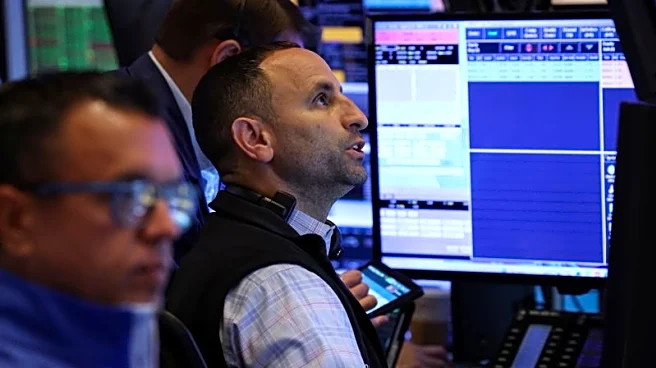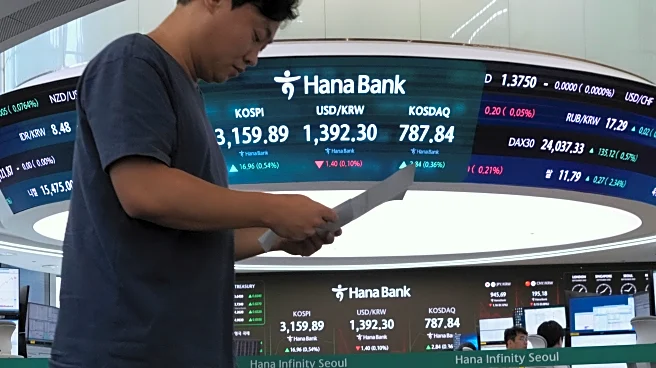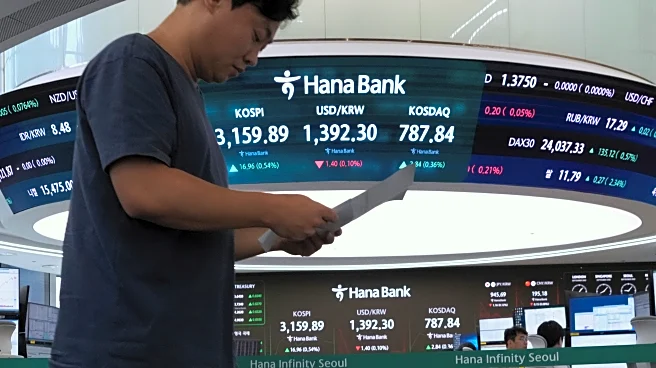What's Happening?
Gold futures have surged to a new all-time high, reaching $3,602.40, marking the most significant single-day performance since April 21st. This increase is part of a broader bullish trend, with gold futures advancing in six of the past seven trading sessions. The December futures contract for gold is currently fixed at $3,599.50. This rise is notable as it coincides with a strengthening U.S. dollar, which gained 0.66% on the same day, defying the traditional inverse relationship between gold and the dollar. The surge is largely driven by unprecedented central bank accumulation worldwide, with foreign central banks now holding a greater percentage of gold than U.S. Treasuries in their international reserves for the first time since 1996.
Why It's Important?
The shift in central bank reserve management strategies signifies a departure from the post-Cold War consensus favoring dollar-denominated assets. This change suggests a growing desire among central banks to diversify away from dollar dependency, potentially due to concerns about currency volatility, geopolitical tensions, or long-term fiscal sustainability in developed markets. Additionally, evolving Federal Reserve policy expectations are contributing to gold's rally. Market participants are increasingly confident that the Federal Reserve will implement a 25-basis point rate reduction this month, with a 91.7% probability of such action. This expectation reduces the opportunity cost of holding non-yielding assets like gold and enhances its appeal as a safe-haven asset.
What's Next?
The anticipation of a Federal Reserve rate cut is likely to continue influencing gold prices. If the rate reduction occurs, it may further bolster gold's attractiveness as a safe-haven asset amid economic uncertainty or policy accommodation. Central banks may continue to adjust their reserve strategies, potentially increasing their gold holdings further. The ongoing geopolitical tensions and concerns about currency volatility could also sustain the demand for gold as a stable asset.
Beyond the Headlines
The synchronized rise of gold and the U.S. dollar presents an intriguing market anomaly that may warrant deeper examination. This phenomenon could indicate shifting dynamics in global financial markets, where traditional relationships between assets are evolving. The long-term implications of central banks diversifying away from dollar-denominated assets could lead to significant changes in international reserve management and global economic stability.













